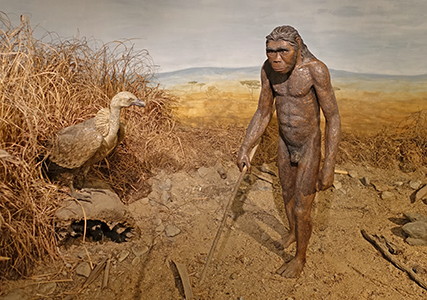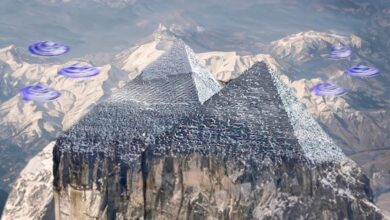The Worst Time To Have Ever Been A Human
**Evolutionary History of Homo habilis – A Period of Danger and Adversity**

**1. Short Lifespan of Homo habilis:**
Homo habilis, who lived about 2.3 – 1.65 million years ago, was one of the first recorded human species. However, they faced a short average life span: only 12 years.
**Causes:**
**High infant mortality:** Weak immune system and inability to fight disease.
**Risky living environment:** Having to share the environment with dangerous predators.
**Lack of skills and defense tools:** Their stone tools were very primitive, not effective enough for self-defense or hunting.
**2. Small, vulnerable body features:**
Homo habilis had a small, fragile body:
– **Average height:** Under 1.2m (4 ft).
– **Weight:** About 30-35 kg (60% of modern humans).
– **Skeleton:** Not strong enough to withstand impacts or attacks.
Their bodies were also not well-suited for both climbing and running, making them easy targets for predators. Homo habilis may have lived partly in trees to avoid danger, but they were not as good at climbing as chimpanzees, and were prone to falls that could lead to death or serious injury.
**3. Diet and dangers of foraging:**
Homo habilis were primarily carnivores, but their foraging was always risky. – **Hunting:** They were not strong hunters, but often had to **scavenge for the carcasses of animals left by other predators.** This forced them to leave the trees and go down to the ground – where there were many dangers.
– **Rudimentary tools:** Stone tools helped Homo habilis cut bones and meat from animals, but they were not enough to protect them from predators.
– **Fierce competition:** Species such as ancient hyenas and big cats often usurped food, sometimes even hunting Homo habilis as prey.

**4. Facing giant predators:**
Homo habilis had to survive in an environment full of fearsome predators. Some typical species include:
– **Megantereon (Giant Saber-toothed Cat):**
– This was one of the biggest threats. Megantereon had sharp fangs up to 20 cm long, often biting through the skull of Homo habilis.
– **Dinofelis (Prehistoric Predatory Cat):**
– This cat species likes to hide and attack Homo habilis from the dark, especially in dense forest areas and near water sources.
– **Pachycrocuta (Giant Hyena):**
– This ancient hyena is nearly 1m tall, with a strong bite force to crush bones. They hunt Homo habilis in packs, often using a siege tactic.
– **Crocodylus anthropophagus (Man-eating Crocodile):**
– This crocodile species is giant, up to 7.5m long and weighs more than 1.5 tons. Homo habilis is often attacked by them when approaching water sources to drink or forage.
**5. Harsh living environment:**
Homo habilis lives mainly in East Africa, where the climate is arid, water resources are scarce and erratic. – **Resources:** Food scarcity forced them to compete fiercely with other animals.
– **Survival:** They had to move constantly to find shelter and avoid predators.
**6. A dangerous life journey:**
Unlike later evolved human species, Homo habilis had no protection from fire, housing or large communities. They relied entirely on endurance, ingenuity and a little luck to survive in this dangerous period.
**Conclusion:**
Homo habilis is a symbol of the struggle for survival between harsh nature and physical and intellectual limitations. However, they laid the foundation for later human progress, opening the way for the journey to conquer the world.








